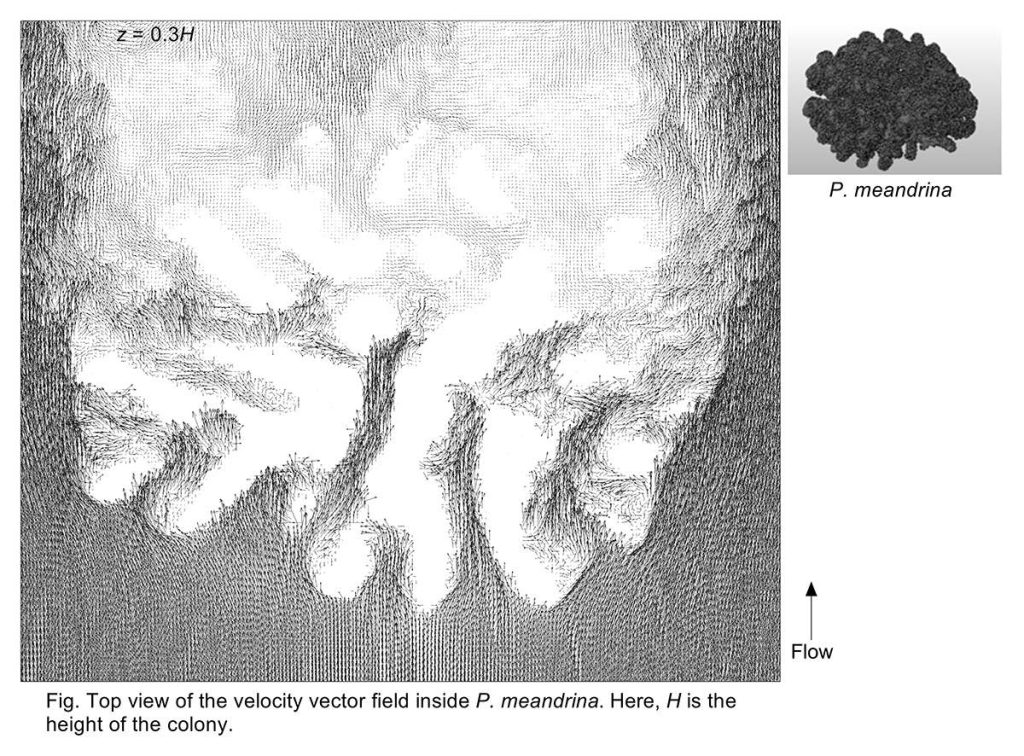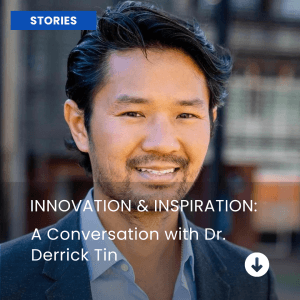

Hello! Who are you and what are you working on?
I am an engineer with a research background in computational fluid dynamics (CFD). My research centers on fluid dynamics in nature, with a focus on coral hydrodynamics. I use computational techniques to obtain a three-dimensional flow field inside the skeleton of real coral geometry. My subjects of investigation range from smaller-scale flow dynamics at the interior of a complex branched colony to large-scale hydrodynamics inside the coral reef. Recently, I have received my Ph.D. degree from the “Department of Biomedical Engineering and Mechanics” at Virginia Tech. I have completed my Undergraduate and Master’s degree in Mechanical Engineering from Bangladesh University of Engineering and Technology and North Carolina A & T State University respectively. Currently, I am working on river transport modeling as a Postdoctoral researcher at the University of Houston.
From childhood, I had a strong curiosity about natural phenomena, which has led to my current research work. The objective of my research is to obtain the detailed hydrodynamics inside the coral colony and to understand the physiological processes inside the reef, which is under constant threat due to climate and anthropogenic pollution. In the future, my goal is to continue my research on environmental issues and to help the people of the coastal community.

What’s your backstory and how did you come up with the idea?
I was born and raised in a country where natural disasters are a frequent phenomenon and hundreds of thousands of people are affected by natural disasters each year. Now these frequently happening natural disasters have become a global phenomenon and affecting millions of people all over the world. Therefore, when I got the opportunity to research on the coral reef at Virginia Tech for my Ph.D. program, I was excited to find a way to achieve my personal and professional goals. For my Ph.D. dissertation, I worked in the “Laboratory for Fluid Dynamics in Nature (FINLAB)” under the supervision of Dr. Anne Staples in a project entitled “Computational Analysis of Internal Coral Hydrodynamics” from 2014 until the middle of 2020.
Coral reefs are the largest marine ecosystem and act as the first line of defense by reducing up to 97% of the incoming wave energy. Growing evidence indicates that artificial structures built for the protection of coastal areas affect marine lives and damage the socio-economic balance of the coastal economy. In contrast, a natural-based solution like coral reefs is becoming an important alternative due to its effective risk reduction mechanism. Though the flow field above the reef has been studied for decades, relatively little information is known regarding the flow dynamics inside the coral colony. In my research, I have used a leading-edge computational fluid dynamics tool to obtain the hydrodynamic condition inside the coral colony to understand the transport mechanism and physiological process required for their survival.
Obtaining the flow field inside the colony is not straightforward. Traditional measurement and visualization techniques were unable to depict the detailed flow profiles inside the colony due to the lack of acoustic and optical access at the interior due to the complex branching patterns of the coral colony. Earlier, researchers tried to use analytical methods to predict the flow condition inside the colony but these results differ significantly from the observed values. Numerical simulations can be an important tool to resolve the flow field inside the colony but capturing the complex geometry of real a coral colony is still a big challenge. In my research, I have used a special numerical technique (Immersed Boundary Method) to capture the hydrodynamic around Computed Tomography (CT) scan of a real coral skeleton. For CFD simulation, you need a high-quality mesh but generating body-conforming mesh around such complex geometry is difficult and expensive. Here, I have used the Cartesian grid instead of the body-conforming mesh to obtain the three-dimensional flow field and mass transport mechanism inside two different Pocillopora corals with different branching density.

Please describe the process of launching the project
I want to thank my Ph.D. advisor, Dr. Anne Staples for keeping her trust in me throughout my research. The first couple of simulations on the detailed flow field made us optimistic about the project. My first journal paper on the mass transport mechanism inside a densely-branched coral colony was published as a Featured Article (https://aip.scitation.org/doi/abs/10.1063/1.5094076?journalCode=phf) in “Physics of Fluids” published by the American Institute of Physics (AIP). To recognize the importance of my work, AIP also highlighted my research on Scilight (https://aip.scitation.org/doi/10.1063/1.5111767), which displays the most interesting research across the AIP Publishing Journals. I have also presented these detailed computational results in numerous conferences and obtained a positive response from the fluid dynamics community. Recently, I have published a couple of journal papers on the mass transport mechanism of branching corals (https://www.mdpi.com/2311-5521/5/3/153) and able to show the effects of coral morphological structure on the surrounding flow condition (https://journals.plos.org/plosone/article?id=10.1371/journal.pone.0225676).
If your research area is outside the traditional field, it will naturally attract more attention. I work on a topic, which is a combination of both nature, and engineering and people enjoy the work as they can easily connect it with their surroundings. Besides, tools like Research Gate and Google Scholar have helped me to gain a lot of visibility.
Understanding the hydrodynamics of coral reefs is critical for coastal resiliency. My long-term goal is to create a linkage between small-scale flow dynamics and large-scale hydrodynamics in the canopy flow for the coral reef. The results from the project will also give information regarding the impacts of coral reef on turbulent stress of the incoming flow, shore stability, and sediment transport rate more accurately than before.
Through my academic journey, I have the opportunity to work on a couple of projects including my research. Each project is like exploring a new domain. In the beginning, you do not know the challenges you will confront but the success depends on your determination and hard work. Similarly, my journey through these projects was not easy. I started these projects with a few simple questions and then buildup my methodology based on these simple ideas. Every time, I asked myself what I have achieved and what is my next goal. These simple questions have worked as a driving force throughout my research and helped me to solve these problems.
I am an early riser. The first thing I like to do in the morning is to walk for at least 30 minutes. The fresh air in the morning works as a catalyst for me and helps to concentrate the rest of the day. Then I start my day with light works with my coffee mug and headphones on my ear. The rhythm of the music helps my brain to remain active as I am looking at the bright screen of the laptop almost for the whole day.
As a computational person, I have to work on a desktop or laptop most of the time. In the morning, I check my email and work on my simulations. If there is no issue with the code, I run my simulation on clusters for days. Otherwise, I have to debug the code, which sometimes takes hours to fix the glitch. It is a tedious job and needs lots of patience. Meeting and presentation are part of daily life for a researcher. I have to spend a lot of time making slides for a group meeting or a conference. Presentation is an art and I try to make my slides visually attractive to make the subject interesting to the audience.
Simple, neat, and clean. I have one laptop, one standby desktop, a pencil, and papers on my desk. I do not like too many staff near my working area. My desk is near the window and enjoys the sunshine while I am working. Now everything has changed due to the pandemic. Currently, I am working from home and the work environment is completely different. The best thing about my work is that I can remotely access my workstation from anywhere through a laptop or android device and can check the progress of my work even when I am having my lunch in a restaurant.
As I am working remotely, the most important task for me is to check my email regularly. I use TEAM and Zoom to keep connected with my working group. Earlier, I have used Slack, which also has nice features and is suitable for small groups.
For professional connections, I use LinkedIn. Every day, I spent a designated portion of time browsing the update from my connection. I also try to keep my profile up-to-date and share interesting news/stories with my connections. Recently, I have started working on Twitter and really like this platform.
Twitter and Google news. I also like to read the newspaper specifically international news. In between my work, I go through the headlines for a couple of minutes and go for the details if the news looks interesting. For research-related works, I follow Research gate, Google Scholar, and now Twitter.
I am not a huge fan of podcasting but sometimes like to listen to special features from Nature. If I am interested in a topic, like everyone else I try to google it and then use specific tools like Google scholar to read journal papers on the topic. Conference and seminars are also a good resource for me.
Cooking is not my thing and my wife complains about it. Here I have surrendered without any fight. During my leisure, I spend most of the time playing with my kids and watching movies. I also like to read. I read at least 45 minutes before bedtime. It may be anything from history to horror story but I have to read to calm down my brain from the whole day activities.
Enjoy your work and maintain a friendly relationship with your colleagues. If you do not like what you are doing,
look for other alternatives. Most importantly maintain a healthy work-life balance to keep yourself and your family happy.
LinkedIn: https://www.linkedin.com/in/md-monir-hossain-33a1b2185/
Twitter: https://twitter.com/nature_flow_MH
ResearchGate: https://www.researchgate.net/profile/Monir_Hossain6/research
Publications: https://scholar.google.com/citations?user=zjXoLN4AAAAJ&hl=en






DISCLAIMER: ConductScience and affiliate products are NOT designed for human consumption, testing, or clinical utilization. They are designed for pre-clinical utilization only. Customers purchasing apparatus for the purposes of scientific research or veterinary care affirm adherence to applicable regulatory bodies for the country in which their research or care is conducted.